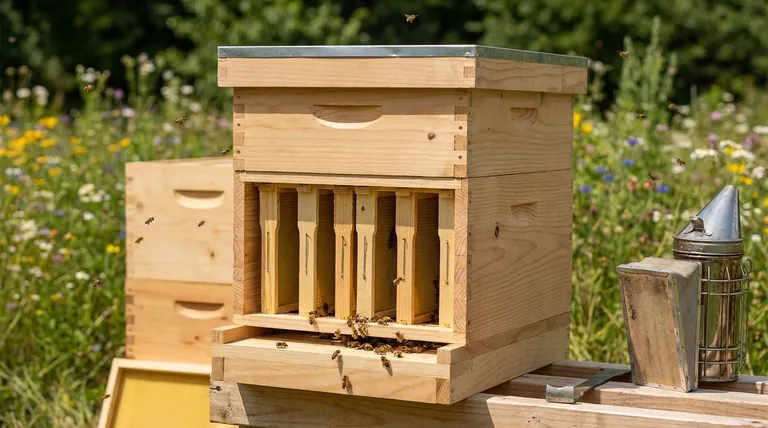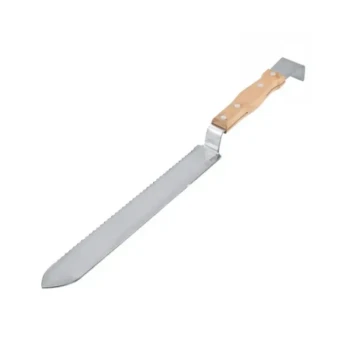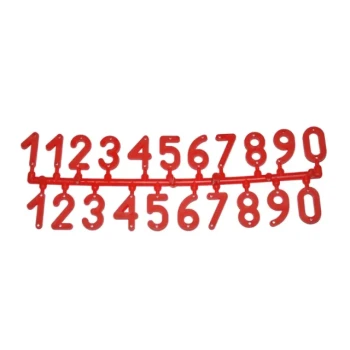In beekeeping, a deep box is the foundational component of a standard beehive. Also known as a brood box, brood chamber, or deep hive body, it is the largest standard box, measuring 9 5/8 inches tall. Its primary purpose is to serve as the colony's nursery, providing the dedicated space for the queen to lay eggs and for the young bees, or brood, to develop.
The deep box is fundamentally designed for the health and expansion of the bee colony itself, not for the beekeeper's honey harvest. Its significant size is optimized for the queen's egg-laying capacity and the immediate food storage required to support the next generation of bees.

The Core Function of a Deep Box
A beehive is a modular system, and the deep box is the most critical module. It serves as the engine and living quarters of the entire colony.
The Brood Chamber
The most vital function of the deep box is to be the brood chamber. This is where the queen lays thousands of eggs per day.
The 9 5/8-inch height of the frames inside provides a large, uninterrupted vertical surface. This allows the queen to lay her eggs in a natural, cohesive pattern, which is crucial for efficient thermoregulation and care by the nurse bees.
The Colony's Pantry
Within the deep box, worker bees construct a specific architecture. They store reserves of pollen (protein) and honey (carbohydrates) in an arc-like pattern directly above and around the brood nest.
This ensures that the developing larvae have immediate access to the food they need. This food is for the colony's survival, not the beekeeper's surplus.
Standard Dimensions
Deep boxes are standardized in height but vary in width to accommodate a different number of frames.
The most common sizes are 10-frame (the commercial standard), 8-frame (a lighter, increasingly popular choice for hobbyists), and 5-frame (used for starting small "nucleus" colonies).
Understanding the Trade-offs
While essential, the deep box comes with a significant trade-off that every beekeeper must consider: its weight.
The Weight Factor
A deep frame full of honey, pollen, and brood is incredibly heavy. A fully loaded 10-frame deep box can weigh 80 pounds or more.
This makes hive inspections and management physically demanding. It is the primary reason why deep boxes are almost never used for collecting surplus honey, which is harvested from smaller, lighter boxes called "supers."
Single vs. Double Deep Configurations
Beekeepers debate whether to use one or two deep boxes for their brood chamber.
A single deep box is lighter to manage overall but may restrict a highly prolific queen, potentially encouraging the colony to swarm (reproduce by splitting).
A double deep box configuration gives the queen a massive area to lay, fostering a very large and populous colony. However, it requires lifting and inspecting two extremely heavy boxes.
Using Only Medium Boxes
To avoid the weight of deeps entirely, some beekeepers standardize their entire operation on medium-sized boxes (which are typically 6 5/8 inches tall).
In this system, two medium boxes are used for the brood chamber. The key benefit is that all equipment is interchangeable and significantly lighter. The downside is that the brood nest is split across two boxes, with a physical gap between the top and bottom frames.
Making the Right Choice for Your Apiary
Your choice of hive configuration directly impacts your management style and physical effort.
- If your primary focus is a traditional setup with maximum brood space: A single or double deep box configuration provides the ideal, uninterrupted area for the queen to thrive.
- If your primary focus is minimizing heavy lifting and standardizing equipment: An all-medium box setup is an effective alternative, though it creates a split brood nest.
- If you are starting a new hive from a small colony: A 5-frame deep "nuc" box is the industry standard for establishing a young colony before moving it into a full-sized hive.
Ultimately, understanding the role of the deep box is the first step toward effectively managing the long-term health and productivity of your colony.
Summary Table:
| Aspect | Key Detail |
|---|---|
| Primary Function | Brood chamber for queen's egg-laying and bee development |
| Standard Height | 9 5/8 inches |
| Common Sizes | 10-frame (standard), 8-frame (lighter), 5-frame (nucs) |
| Main Advantage | Large, uninterrupted space for a strong, healthy colony |
| Main Disadvantage | Heavy weight (80+ lbs when full) |
| Alternative Setup | Using medium boxes (6 5/8") for a lighter, standardized system |
Ready to build a stronger, more productive apiary?
As a leading wholesale supplier to commercial apiaries and distributors, HONESTBEE provides the durable, high-quality deep boxes and hive components you need to scale your operation efficiently. Our equipment is designed to support maximum colony health and simplify your management.
Let us help you optimize your hive configuration. Contact our expert team today to discuss your commercial beekeeping equipment needs and request a wholesale quote.
Visual Guide

Related Products
- Langstroth Screen Bottom Board for Beekeeping Wholesale
- Professional Z-Shaped Multi-Function Uncapping Knife for Beekeeping
- HONESTBEE Professional Entrance Bee Feeder Hive Nutrition Solution
- Endless Loop Ratchet Hive Strap
- HONESTBEE Professional Frame Wiring Board and Jig
People Also Ask
- How does a screened bottom board assist with temperature control and pest management? A Key Tool for Modern Beekeeping
- How should the screened bottom board be used throughout the year? A Guide for Healthy Hives
- What is the primary function of a screened bottom board in a hive? Enhance Ventilation & Control Varroa Mites
- What are some considerations when choosing between solid and screened bottom boards? Optimize Hive Health & Pest Control
- What are the assembly options for the Cypress Screened Bottom Board? Ready-to-Use for Immediate Hive Health



















